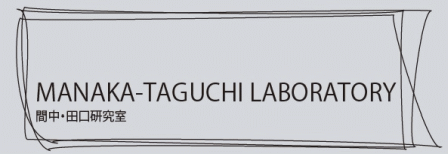”Research target
 What is the LIQUID CRYSTAL at the INTERFACE?
What is the LIQUID CRYSTAL at the INTERFACE?
Historically, liquid crystal (LC) was first discovered by an Austrian botanist F.Renitzer, while German physicist Otto Lehman first confirmed an optical anisotropy of the material by F.Renitzer. Thse days, LCs has been widely used in our life. For example, an information display is one of them. LC is a material that represents liquid property and crystalline anistropic structure in the same time. That is, LC flows like a water, while LC represents optical anisotropy like a qualtz. These interesting property of LC is well understood taking acount that rod-like shape molecules prefer to align parallel to each other like woods in the lumberyard. There are many LCs in the nature, for example, squid ink, cholesterol in food, red blood cell membrane, and etc.

Figure 1: A liquid crystal display (LCD) for parsonal computers.
For LC display, one needs to align LCs along one direction over entire region of display. This is done using so-called rubbing technique. That is, after we simply rub a glass plate by a coth such as rayon, we get uniformly aligned LC device. This method is widely employed for LC products these days. In 1920s, rubbing was noticed by researchers such as P.Chatelein, H.Zocher, K.Coper, but why this simple method works was mysterious. So far, many works devoted on this problem and some mechanism were uncovered. However, there is still open questions. Somthing new physics is waiting for us even in the application field.
Based on the dielectric physics, we established the experimental method to determine the orientational ordering processes of liquid crystalline molecules at interface. These are the optical second-harmonic generation (SHG) measurements, optical polarized absorption measurements, surface potential measurements, and so on. Using these optical and electronic techniques, we can approach the interfacial phenomena which occurs within some nano-meter (10^-9 m) from surfaces.
In addition, quantitative discussion interms of so-called orientational order parameter defined as Sn = < Pn (cos A) > (Pn:n-th Legendre polynomial, < > statistical average over molecules, A:tilt angle of molecular-long axis of a rod-like-shaped molecule from surface normal direction) is informative. So far, it was found that the orientational order of liquid crystalline film at interface is well understood using the set of the orientational order parameters, S1, S2, and S3. S1 and S3 tell us the interfacial asymmetric interaction while S2 sugests us the liquid crystalline nature of molecules at the interface. Further investigation is proceeding.
Recent Progress
[1] Dai Taguchi, Takaaki Manaka, and Mitsumasa Iwamoto, "Orientational order of 4-n-pentyl-4-cyanobiphenyl molecules deposited on azobenzene monolayers",Thin Solid Films, Vol.499, pp.229-233 (2006 Mar)[2] Dai Taguchi, Makoto Hamatsu, Kazuki Kitazawa, Takaaki Manaka, and Mitsumasa Iwamoto, "Orientational ordering process of 4f-n-pentyl-4-cyanobiphenyl molecules deposited on polyimide Langmuir-Blodgett films," Colloids and Surfaces A: Physicochem. Eng. Aspects, Vol.284-285, pp.263-266 (2005 Dec)
[3] Takaaki Manaka, Dai Taguchi, Dai Nakamura, Hajime Higa, and Mitsumasa Iwamoto, "Orientation of liquid crystal molecules on command surface LB monolayer studied by the surface potential and SHG technique," Colloids and Surfaces A: Physicochem. Eng. Aspects, Vol.257-258, pp.319-323 (2005 May)

 Email address:
Email address:








